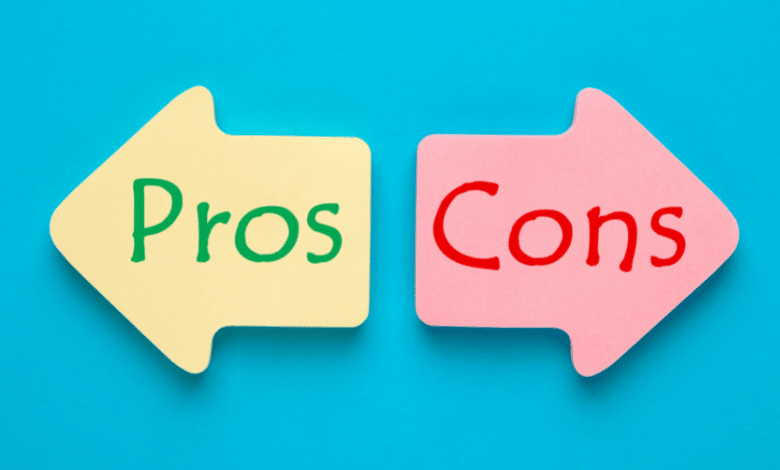When it comes to online shopping, Amazon is the ideal place to shop. The company attracts millions of new buyers every month due to the products and services offered. In 2019, it was claimed that small and medium-sized enterprises sold approximately 4,000 products per minute. In light of these data, it is evident that all sellers should consider selling their items on Amazon at the very least.
It is a very appealing distribution method for internet retailers to utilize. Nevertheless, the results a particular merchant will achieve rely on various factors, and what is productive for one store may not necessarily be productive for another.
Therefore, we highlight the key pros and cons of using Amazon Prime in 2022.
What Are the 5 Pros of Selling on Amazon Prime?
Many marketing research studies now center on how Amazon could so skillfully carve off a chunk of our brains and position itself as the number one spot for many shoppers.
So let’s look at some benefits retailers tend to draw from Amazon.
Increased number of sales
Amazon receives millions of unique visitors interested in purchasing various products per month.
By the end of 2019, the website had gained over $280.5 million in revenue and 150 Prime members worldwide. Amazon is the most popular shopping destination for the vast majority of people.
Every shop that lists its products on Amazon immediately increases its trustworthiness and credibility in customers’ eyes. This is because some customers are more likely to purchase an item from Amazon than from a shop they have never heard of before.
Many customers are persuaded to purchase from Amazon’s website because of the company’s assertion that it will provide superior goods and services. They have likely had a positive experience shopping on Amazon in the past, so your shop will profit instantly from that.
Attracting new clients
In relation to increased revenue, Amazon can assist you in expanding your consumer base. Customers generally move to Amazon to search for certain products rather than visit a particular retailer there. So, that might work for yur good.
Customers will have a better chance of becoming aware of your store if they can locate things that interest them while exploring your wares.
When a customer makes their initial purchase with your company, the fate of future transactions is in your control. Because of the positive impression you made on them, there is a greater possibility that you may interact with them again in the future. If you can win them over with exceptional service, they will come back again and again.
Global expansion
Considering Amazon is one of the largest and most reliable global selling and purchasing platforms, it is relatively simple to begin selling in many markets. Although they have only developed websites for 13 countries, they ship to more than 100 countries globally. It is up to the customer if they are willing to pay a possibly higher shipping price based on their region.
Any shop can rapidly determine whether or not its products are appealing to a worldwide audience by posting a listing on a local Amazon and using Amazon’s services. You are covered in every area, including international order delivery and localized customer assistance.
Reduced advertising cost
You will get contact with the millions of customers that visit Amazon’s website daily. You might be able to start making sales right away without putting any substantial effort whatsoever into marketing, depending on the specifics of your market niche and how competitive it is. Customers looking for products similar to what you sell can quickly find you on Amazon because the Amazon website functions as its search engine.
No stock
Amazon has more than 175 fulfillment centers where you can ship your products for storage, packaging, and shipping. The primary advantage of this is that you do not have to deal with the logistics of shipping things. You can focus on other crucial business processes while gleefully observing your order volume climb.
What Are the 4 Cons of Selling with Amazon Prime?
High competition
You undoubtedly saw this one happening, and yes, there are many strong rivalries here. It is vital to have a long-term strategy.
If you offer the same goods as other retailers, you will compete with those merchants for the Amazon Buy Box. Amazon’s web pages are arranged in a manner that is opposite to that of Google Shopping, which arranges product pages in accordance with vendors.
Therefore, when numerous sellers offer the same goods for sale, Amazon will select the optimal seller. When a consumer clicks the Add to Cart button, the listed seller’s products will be placed in their cart.
Selling charges
The advantages that we have described above do not come without a price. Amazon levies substantial commission fees on third-party sellers for every product sold through its platform. Before getting started, it is in your best interest to understand what those monthly payments will look like for you.
Amazon offers two selling plans; professional and individual. The professional plan charges a monthly fee, while the individual plan charges a fee per item sold.
If you sell fewer than 40 products each month or are unsure of what you will be selling just yet, the Individual Selling plan is the one for you. In that case, you might consider upgrading to the Professional plan.
Management of the orders
If you are trading your products on numerous platforms, synchronizing orders should be one of your top priorities. To maintain an accurate central order management system, you must ensure that Amazon orders are imported effectively into your system.
There is no integration between Amazon and shopping cart platforms. This makes it extremely difficult for merchants selling their items on many channels to manage orders and maintain accurate stock levels.
Complex information flow
Amazon demands daily updates to product information. Additionally, they have stringent standards. Therefore, retailers must establish a specialized Amazon feed from the beginning.
All items must have an ASIN number and be uploaded via the Amazon-API. Linking to an API necessitates merchants to invest in extensive and expensive technical development.
Conclusion
Do you want to facilitate the selling and distribution of your products through Amazon Prime? You need to know the pros and cons of selling with Amazon.
Check More Of Our Content Down Below
Mom Entrepreneurs : Sharing Lessons Learned From Raising Kids
Benefit Of Social Media | Business Owners this is for you



